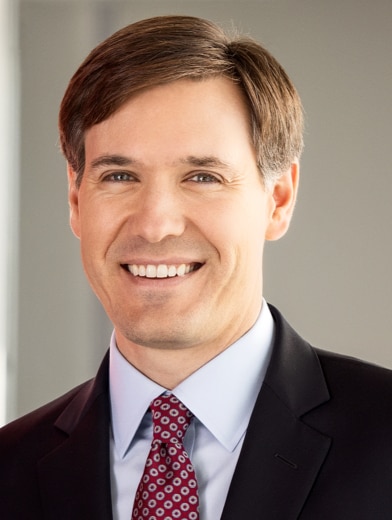Economics and markets
Winding down the monetary tightening cycle
September 21, 2023
Interest rate pauses by the U.S. Federal Reserve and the Bank of England this week reflect the central banks’ progress in the inflation fight and a desire not to restrict economies more than necessary. Rate-hiking cycles are winding down globally. In the U.S., where the economy remains surprisingly resilient, we believe that further monetary policy tightening remains likely.
The Fed held its target for the federal funds rate steady in a range of 5.25%–5.5% on September 20, and the BOE held the bank rate steady at 5.25% on September 21. Both central banks emphasized the need to remain vigilant to return inflation to their 2% targets.
Vanguard believes that one to three more quarter-point hikes may be required to achieve the 2% goal in the United States, where the Fed foresees core inflation returning to target only in 2026. We believe that policy rates are close to peaking, or already have peaked, in the United Kingdom and the euro area. Economic activity has slowed notably in both places. (The European Central Bank raised its policy interest rate by a quarter percentage point to 4% on September 14.)
U.K. inflation data released September 20 likely influenced policymakers who were debating whether to maintain the bank rate or raise it by a quarter percentage point, said Shaan Raithatha, a Vanguard senior economist.
“Core inflationary pressures slowed sharply in August, led by services,” Raithatha said. “However, wage growth remains elevated—the annualized rate was over 8% in the private sector for the three months through July—and rising oil prices present another risk. If wage growth and energy prices remain strong, we see a risk that the bank rate may need to go higher still.”
Both headline and core inflation in the U.K. remain above 6%. Inflation has moderated more rapidly in the U.S., where core inflation (which excludes volatile food and energy prices) of just more than 4% is still more than double the Fed’s target.
“In the U.S., inflation numbers are moving in the right direction even if they’re moving slowly,” said Josh Hirt, a Vanguard senior economist. “This allows the Fed to take more of a wait-and-see approach.”
But we believe that a resilient economy, and particularly a resilient services sector, keeps the potential for further rate hikes on the horizon.
“For the Fed to really succeed in reining in inflation, more is needed,” Hirt said, “whether through further marginal increases in rates or a longer duration in keeping rates high.” Along with its September 20 rate announcement, the Fed projected that its interest-rate targets in 2024 and 2025 are likely to be half a percentage point higher than they had projected in June.
Rates likely to stay elevated longer than markets expect
The economists agreed that the end of rate-hiking cycles wouldn’t immediately be followed by rate-cutting cycles.
“Once the terminal rates are reached, they’re likely to stay there for an extended period,” Raithatha said. “We’re not likely to see rate cuts in either market until the second half of 2024.”
“This is where we really differ from market consensus, which seems to anticipate rate cuts in early 2024,” Hirt said.
One factor behind Vanguard’s belief: The neutral rate of interest—a theoretical rate that neither promotes nor restricts economic activity—is higher than many may imagine, according to Vanguard research.
The Fed, in its rate projections, kept its assessment of the neutral rate—the median of its long-run federal funds rate target projection—at 2.5%. Vanguard believes that the neutral rate for the United States is closer to 3.5%, suggesting that a return to the low-rate environment of the recent past is unlikely anytime soon.
Related links:
- Our investment and economic outlook (article, issued September 2023)
- Labor market pulse: Signs of softening in hiring data (article, issued August 2023)
- At its core, why inflation still matters (article, issued August 2023)
Notes: All investing is subject to risk, including the possible loss of the money you invest.
Contributors

